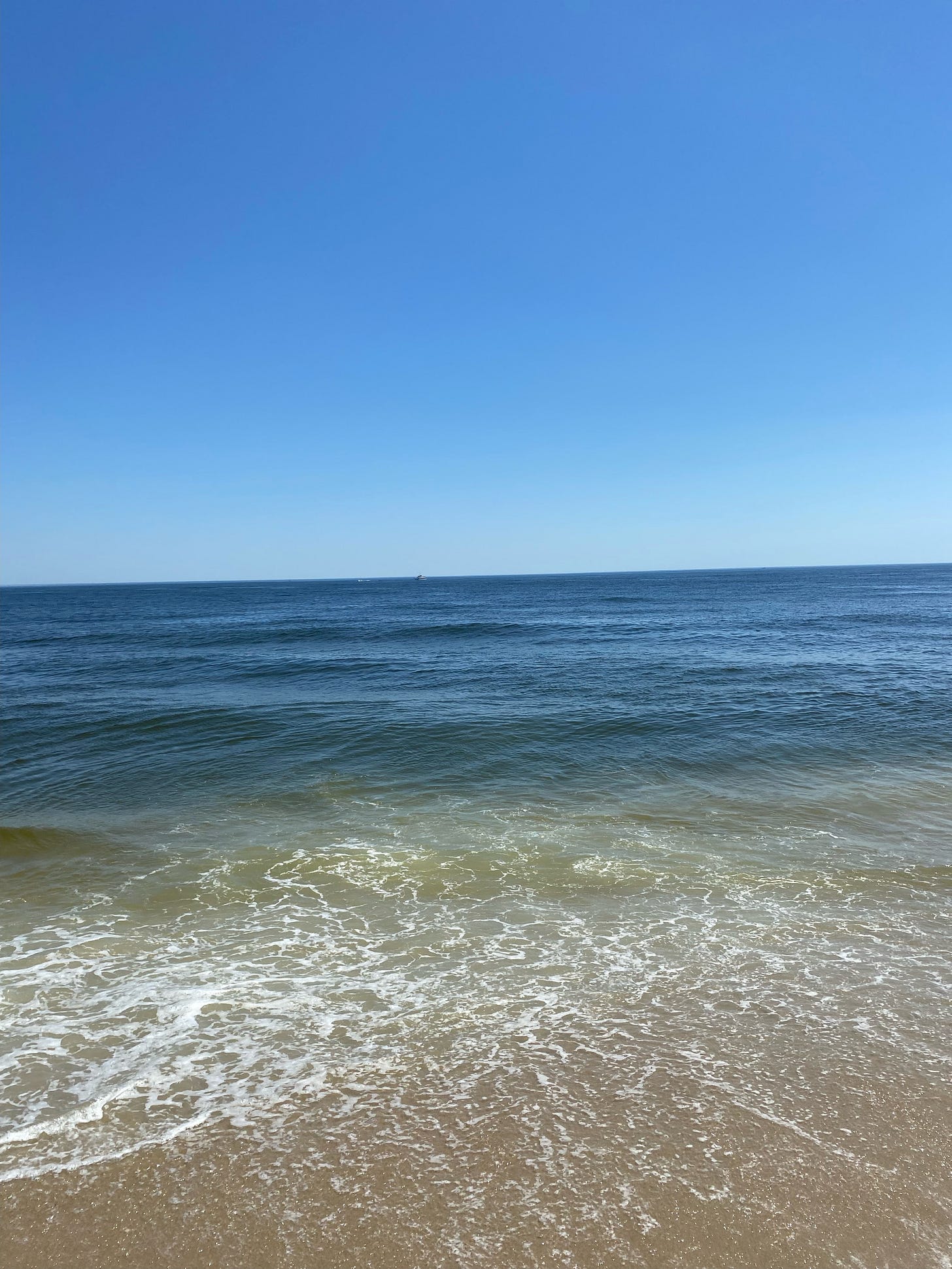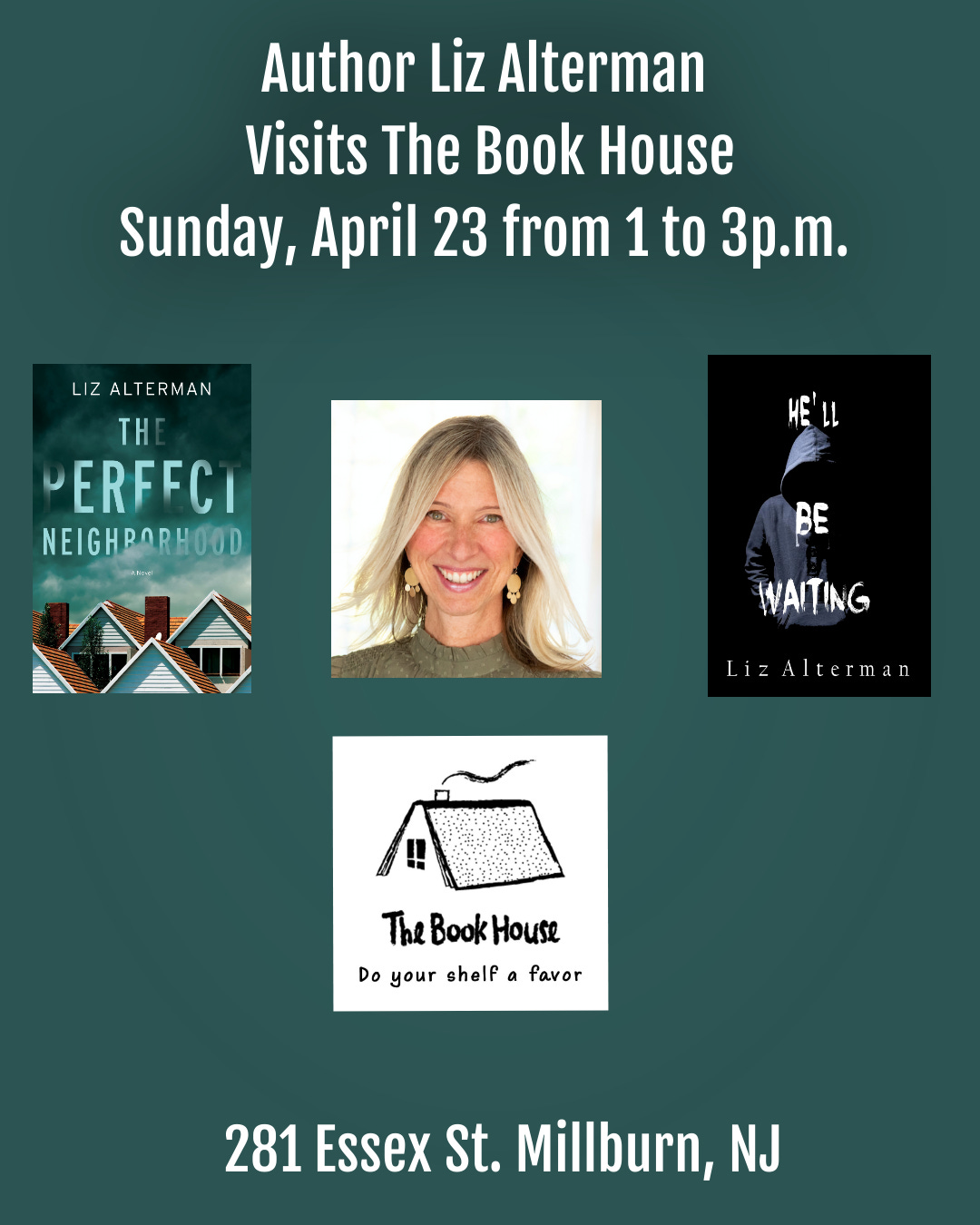Hi, and welcome to my new subscribers! I hope everyone’s been well and enjoying spring.
In New Jersey, the weather has been downright summery and I’m thrilled to have had the chance to get outside and explore—especially after a long, gray winter.
Last week, I visited Branch Brook Park. Designed by Frederick Law Olmsted, best known for New York’s Central Park, this oasis in the heart of Newark is home to more than 5,200 cherry blossom trees, and to see them in bloom is nothing short of spectacular.
Capitalizing on the warm weather, I took my youngest son, who was home for spring break, to the beach. It was so crowded, you’d have sworn it was mid-July. While the water was still pretty chilly (okay, it was actually frostbite-inducing but I’m trying to stay positive), it was amazing to walk in the sand and listen to the waves.
Speaking of listening, on the drive there and back, I listened to poet Maggie Smith’s memoir, “You Could Make This Place Beautiful.” If you’re familiar with Smith’s viral poem, “Good Bones,” it won’t surprise you that her latest is both gorgeous and gut-wrenching. It chronicles the dissolution of her marriage and also explores what it means to be an artist and a caretaker simultaneously. Many passages really spoke to me—too many to write here—but one perfectly summed up our beach day, “I went to find beauty and it was still there.”
I also listened to another audiobook this month—“The Writing Retreat” by Julia Bartz. What a wild ride! The tale definitely kept me guessing (and made me very glad neither of the writing retreats I’ve attended bore any resemblance to this one—though, initially, I was thinking, “Maybe it would help if I were forced to write 3,000 words a day…).
What I also loved about this was listening to the incredible narration by Gail Shalan, who brings these characters to life so vividly. Gail is remarkably consistent, I knew immediately which one was speaking. No easy feat. I’m fortunate to know this gifted actor because she voiced the babysitter character in “The Perfect Neighborhood” and she was kind enough to come see me at a reading last summer. Gail has a bunch of cool projects on her resume and in the works, so if you’re in the market for a great listen, check out her website.
On the subject of appearances, I have two upcoming events this month. If you’re in the area, I’d love to see you!
Sunday, April 23, 1 to 3 p.m.: The Book House, Millburn, NJ — Same day as Millburn’s Street Fair & Craft Show—have I tempted you?
Saturday, April 29 at Princeton Library:
Crafting a Compelling Query Letter Presentation: 11 a.m
Author Day Book Fair: 1:30 to 4 p.m.
Creating a Discussion Guide
Chatting about a piece of writing—whether it’s an essay or a book—is one of the things I love most about reading and having friends who are avid readers.
A few weeks ago, author and college English professor Joy Held reached out to ask me if I’d share her post on how to create a discussion guide for your book. I love this topic. A list of thought-provoking questions can not only spark a lively chat but also open your mind to see how other readers interpreted the same work.
So, of course, I told Joy I’d be happy to share her piece below. I hope you find it as interesting as I did! (I also love this quote below Joy’s email signature: “Women with clean houses do not have finished books.” Amen!)
Just a quick note: none of the links above or below are affiliates. People ask if I’m compensated to promote these, so I want to make it clear that I’m not. I’ve joked that’s because I haven’t figured out how to do it yet, but, really, it’s because I wouldn’t want to feel compelled to endorse something I don’t like or believe in. If you’d like to show your support, I’d be thrilled if you’d consider purchasing one of my books or asking your library to carry one (or all) of them. Here are those (non-affiliate) links:
He’ll Be Waiting
The Perfect Neighborhood
Sad Sacked
If you choose to read any of these with your book club, I’m happy to Zoom into your discussion, just get in touch.
Thanks again and happy reading!
Create a Discussion Guide for Your Book
By Joy E. Held
When the COVID-19 pandemic made it difficult to gather in person and talk about books, readers, authors, and publishers quickly pivoted to virtual meetings. Zoom, Facebook, Vimeo, Kaltura, Google Meet, Skype, Cisco WebEx, Microsoft Teams, and others filled the void offering free or reasonably priced options for keeping the conversations about books moving forward.
At the time, I was serving in a volunteer role as the vice president of programming for a nonprofit writer’s group with a writing craft book club. I was stunned at how easy it was to get popular authors to agree to meet with a group of writers via Zoom on a weeknight to talk about their books. The practice is still in place today because authors and publishers discovered how easy and valuable it is to connect with readers virtually to extend the discussion about a book.
It’s a great way to make published books accessible to more readers when in-person and virtual options are combined to accommodate everyone regardless of location.
This was also the moment I started looking for reading group discussion guides to support our conversations when an author wasn’t available to meet with us. I discovered that guides were out there, but not in the numbers I expected. That’s when my experience as a college English professor reminded me that I had written dozens of reading guides to accompany the literature I taught in my courses. Why didn’t more authors include study guides with their books?
The answer is probably because developing a study guide is not an intuitive process for most people. Authors may know their subjects inside and out, but designing a set of stimulating questions for readers may not seem like an easy process. Because it isn’t. However, there are reader’s guides available from many publishers as their marketing and promotions departments know the value of providing thought-provoking questions for readers to consider after they have read a book. The priceless value is the fact that a discussion guide extends the amount of time and interaction a reader has with a book. Also, a decent discussion guide helps educators assign deeper study of a book and expands the understanding of the message or theme of a story.
Enter the educator (me) with a template to help authors create a discussion guide for their books.
Once an author understands learning styles, teaching methods, and how a reader typically engages with text, the process can be replicated for as many books as they write. I created an online course to teach writers how to create a discussion guide for their books.
I’m excited to share this practice with authors, editors, publishers, educators, librarians, book clubs, readers, students, and anyone who wants to encourage deeper engagement with a book.
The broad topics of the course include:
1. Learn the value of book discussion guides to many different consumers of media
2. Understand research practices that support your knowledge and abilities to create
discussion guides
3. Receive tools and a step-by-step plan
4. Have the option to share your guides with me/other students.
The course is divided up into these SECTIONS:
1. What is a book discussion guide?
2. Typical contents of a book discussion guide.
3. Discussion categories and how to create questions from your book.
4. How and why a book discussion guide will help you and your readers.
5. Downloads of worksheets, progress journals, infographics, checklists, a resource list, a sample fiction book discussion guide, and a basic book discussion guide template.
Writing a book is generally about connecting with other people. Authors typically have an intention in mind when writing a book be it fiction or nonfiction. Call it a message, theme, or purpose, writing and publishing a book is one way to reach more people with your story.
You may or may not have a finished or published book at this point. It doesn’t matter because this formula can be put into action at any stage of a book’s life. It can boost interest in a new book and lengthen the shelf life of an older title because of the way a good book discussion guide adds dimension and interest to a publication. Once you have the process in hand, anyone can go from “how do I extend the life and interest in this book?” to increasing sales and expanding engagement almost indefinitely. What do I mean by “expanding engagement?”
Expanding engagement with a book means ways to keep a book “top of mind” for a reader.
There is social media, of course, but a good book discussion guide has the potential to do so much more than posts or even paid online advertising. It works the same for any genre and any writing style because once a reader finishes the last page of your book, you want them to keep thinking about the content, wondering about you, the author, and having ways to delve deeper into the book’s meaning, purpose, construction, and more.
“Create a Discussion Guide for Your Book” provides a step-by-step action plan about the why, how, when, and what of developing a knockout discussion guide to accompany your books. Even poetry! Every published work has a history, a construction period, and more that readers are eager to learn about. The course contains printable worksheets, checklists, text lessons, videos, and progress journals that will give you the tools to design, create, analyze, and share a discussion guide based on your book. Once you have the formula, it is repeatable for every book you publish.
The course retails for $197.00, but readers of this newsletter have access to the sale price for a limited time. To get started, click this link and start immediately.
Only $97.00
All good things,
Joy
Copyright 2023 Joy E. Held









Oooh yay! I’m in Nj, too!
I’ve put your April 23rd bookstore appearance on my calendar, will try to be there!!